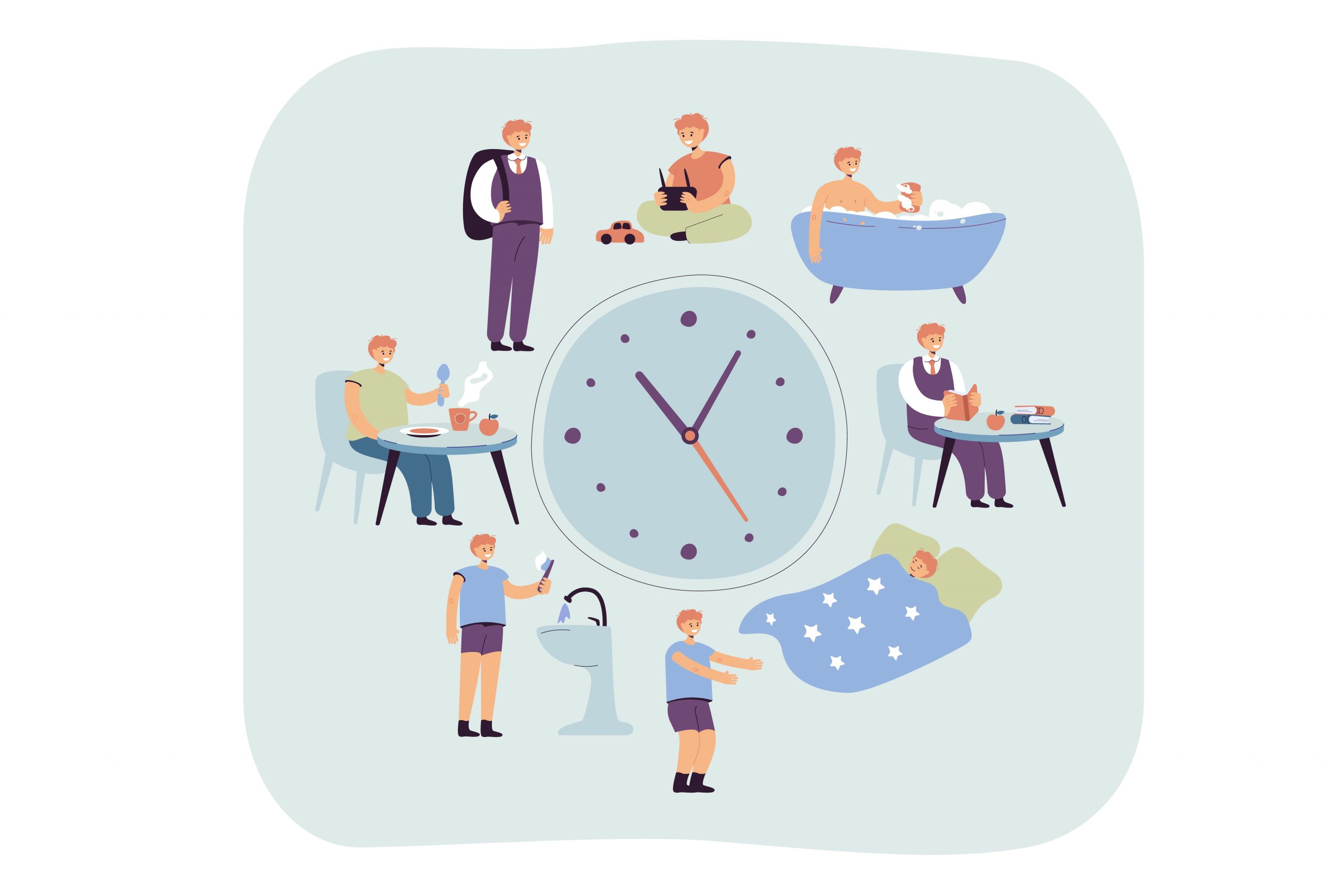🛀French Level 3, Activity 04: La routine quotidienne / Daily Routine (Face-to-Face)
Products: Schedules, routines
Practices: Planning one’s day
Perspectives: Routines are seen as a normal part of life that is essential to keeping oneself polished and ready to go!
NCSSFL-ACTFL World-Readiness Standards:
- Standard 1.1: Students engage in conversations or correspondence in French to provide and obtain information, express feelings and emotions, and exchange opinions.
- Standard 1.2: Students understand and interpret spoken and written French on a variety of topics.
- Standard 1.3: Students present information, concepts, and ideas in French to an audience of listeners or readers.
Idaho State Content Standards:
- COMM 1.1: Interact and negotiate meaning (spoken, signed, written conversation) to share information, reactions, feelings, and opinions.
- COMM 2.1: Understand, interpret, and analyze what is heard, read, or viewed on a variety of topics.
- COMM 3.1: Present information, concepts, and ideas to inform, explain, persuade, and narrate on a variety of topics using appropriate media in the target language.
NCSSFL-ACTFL Can-Do Statements:
- I can identify body parts.
- I can ask someone questions about their routine.
- I can talk about my daily routine.
Materials Needed:
- White boards
- White board markers
- Google Slide Presentation
- Monster Cards
Would you like to make changes to the materials?
Access the template(s) below:
- Monster Cards (Canva Template, free account required)
Warm-up
1. Begin by introducing the Can-Dos for today’s activity.
2. Have students get with a partner.
Demandez aux étudiants de se mettre en équipe de deux.
3. Hand each student a picture of a monster.
Donnez à chacun une photo d’un monstre.
4. Tell them they will be describing their monster to the group. (How many eyes, legs, arms, teeth, color, etc.)
Dites-leur qu’ils devront décrire leur monstre au reste du groupe (combien d’yeux, de jambes, de bras, de dents, quelle couleur, etc.).
5. Give them 2 minutes to prepare.
Donnez-leur 2 minutes afin de se préparer.
Main Activity
1. Students will receive a white board and marker.
Vous allez recevoir un tableau blanc et un feutre.
2. Have them separate their whiteboard into two sections (morning and night) They will, in pairs, describe their morning routine and night routine in detail.
Demandez de séparer votre tableau en deux sections (matin et soir). En équipe de deux, ils devront décrire en détail leur routine du matin et leur routine du soir.
3. The person listening will write their partner’s schedule on their whiteboard.
La personne qui écoute devra écrire l’horaire de son partenaire sur le tableau blanc.
4. Once they have filled out the week, the partners will switch roles and the other person will fill theirs in.
Après avoir complété l’horaire de la semaine, ils devront échanger de rôle.
5. After they have both filled in each other’s schedules, they will share their partner’s schedule out loud to the rest of the group.
Quand les deux auront terminé, ils devront partager le programme de leur partenaire avec le groupe.
Wrap-up
Ask the following question(s) to finish the activity:
- Trouvez-vous que vous êtes occupé ou non ? Est-ce que vous avez beaucoup à faire chaque semaine ?(Do you find that you’re busy or not? Do you have a lot of things to do this week?)
- À quelle heure vous vous levez le matin ? (What time do you wake up in the morning?)
- Quel jour de la semaine est le plus occupé pour vous ? Le plus libre ? (Which day of the week is the most busy for you? The most free?)
End of Activity:
- Can-Do statement check-in… “Where are we?”
- Read can-do statements and have students evaluate their confidence.
- Encourage students to be honest in their self evaluation
- Pay attention, and try to use feedback for future activities!
NCSSFL-ACTFL Can-Do Statements:
- I can identify body parts.
- I can ask someone questions about their routine.
- I can talk about my daily routine.
Cultural Resources
How to Remix a Pathways Project Activity
Feeling creative? The Pathways Project needs your help in remixing activities for the K-12 classroom.
Try taking an activity to the next level by:
- Add new content (something you’ve created or another OER source)
- Contribute additional activity suggestions
- Integrate authentic materials such as videos, infographics, photos, etc.
- Suggest how to implement the activity in the classroom
- Customize the content for a specific audience or group of learners (for example, K-5 learners or to differentiate for student’s needs)
We want to make it easy to share back with the larger Pathways Project Community! Simply, click this link to remix this activity.
Please consider sharing your remixed activity with us by emailing the activity link to Pathwaysproject@boisestate.edu so that Pathways continues to grow!


